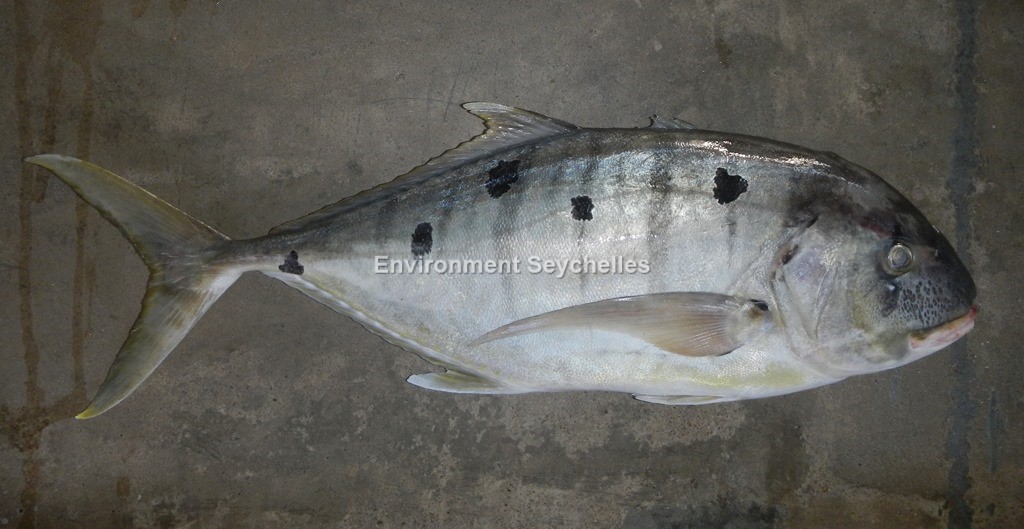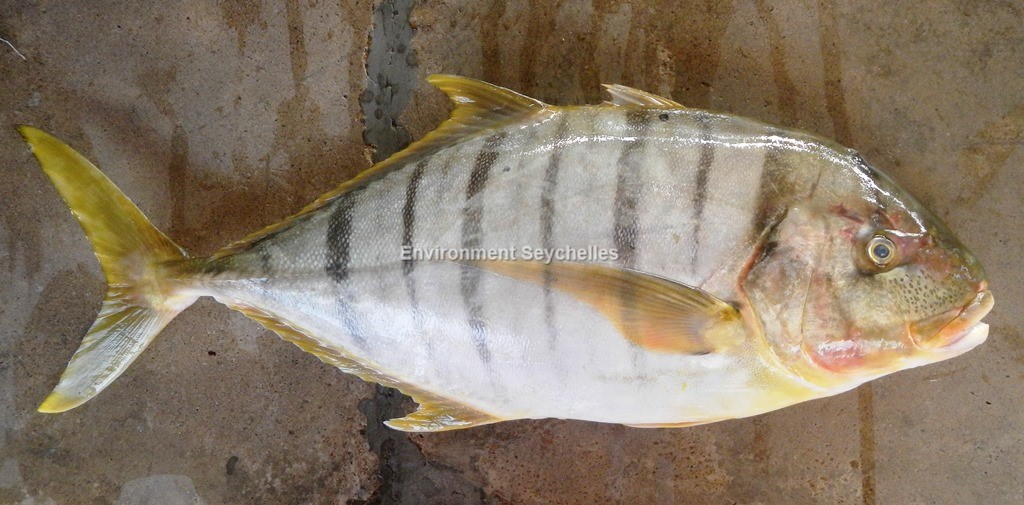Description:
Dorsal spines: 8; Dorsal rays: 18-20; Anal spines: 3; Anal rays: 15-17.
Body compressed, oblong. Upper jaw without teeth; lower jaw with a few feeble teeth in small young absent in adults. Mouth highly protractile. Lateral line with a moderate
regular anterior arch. Breast completely scaly.
Colour: juveniles and young adults yellow to silvery with 7 to 11 black bands, usually alternating broad and narrow. The first band oblique through eye, the second crossing
back and opercle. Body becomes paler with age yellow-green dorsally, pale yellow below. Adults are silvery grey, with black spots or blotches scattered on sides, and often
faint bands. Juveniles and subadults are bright yellow with narrow blackish bars on head and sides. Upper margin of opercle black fading with age. All fins yellow, becoming
paler to hyaline in larger specimens.
Size:
Maturity: Lm 32.5cm TL. Max Length: 120cm TL. Commonly 75cm FL.
Habitat and Ecology:
Occurs inshore over rocky reefs, deep lagoons, and seaward reefs to 80m depth. Juveniles often occur in estuaries. A bottom feeder that uses protractile mouth to root in the
sand and small crevices for crustaceans, molluscs, and small fishes. Juveniles often display 'piloting' behaviour with sharks and other large fishes such as groupers.
Small juveniles may live among the tentacles of jellyfish. Adults form schools.
Fishery Status:
This species is not protected or subject to fishery regulations. It is caught in the handline fishery where it is a common and sometimes abundant component of the catch.
Notes:
References:
Bray, D.J. Gnathanodon speciosus in Fishes of Australia, http://fishesofaustralia.net.au/home/species/4274 (20/05/19)
Fischer, W. & G. Bianchi (eds), (1984). FAO species identification sheets for fishery purposes. Western Indian Ocean; (Fishing Area 51). Prepared and printed with the
support of the Danish International Development Agency (DANIDA). Rome, Food and Agricultural Organization of the United Nations, vols 1-6: pag. var.
Froese, R. & D. Pauly. Eds. (2019). FishBase. https://www.fishbase.in/summary/4464 (20/05/19).
Grandcourt, E.M. et al. (2004). Population biology and assessment of representatives of the family Carangidae Carangoides bajad and Gnathanodon speciosus (Forsskal,1775),
in the Southern Arabian Gulf. Fisheries Research 69 (2004) 331–341.
Williams, I. & Smith-Vaniz, W.F. (2016). Gnathanodon speciosus (errata version 2017). The IUCN Red List 2016: http://dx.doi.org/10.2305/IUCN.UK.2016-3.RLTS.T20432145A46664099.en. (20/05/19).
Citation:
Nevill, J.E.G. (2019). Gnathanodon speciosus, Golden trevally. Seychelles Seatizens. www.seatizens.sc. https://seatizens.sc/species/gnathanodon-speciosus-forsskal-1775/ (revised 22/06/22)




There are no comments